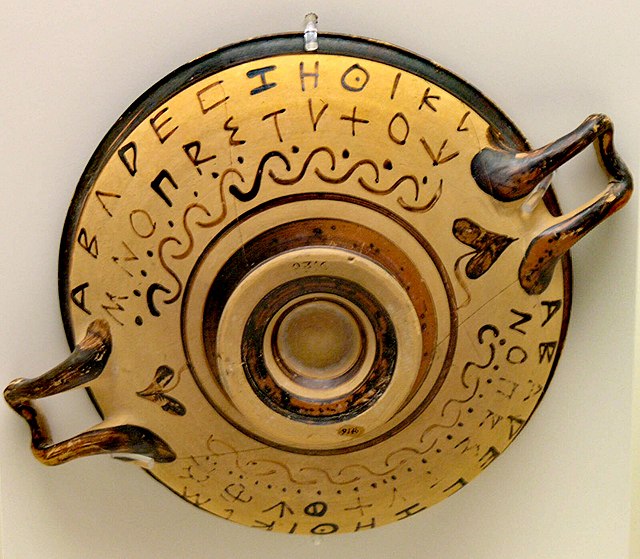Lambda is the eleventh letter of the Greek alphabet, representing the voiced alveolar lateral approximant IPA: [l]. In the system of Greek numerals, lambda has a value of 30. Lambda is derived from the Phoenician Lamed. Lambda gave rise to the Latin L and the Cyrillic El (Л). The ancient grammarians and dramatists give evidence to the pronunciation as (λάβδα) in Classical Greek times. In Modern Greek, the name of the letter, Λάμδα, is pronounced.
The Greek alphabet on a black figure vessel, with a Phoenician-lamed-shaped lambda. The gamma has the shape of modern lambda.
The Greek alphabet has been used to write the Greek language since the late 9th or early 8th century BC. It is derived from the earlier Phoenician alphabet, and was the earliest known alphabetic script to have distinct letters for vowels as well as consonants. In Archaic and early Classical times, the Greek alphabet existed in many local variants, but, by the end of the 4th century BC, the Euclidean alphabet, with 24 letters, ordered from alpha to omega, had become standard and it is this version that is still used for Greek writing today.
Dipylon inscription, one of the oldest known samples of the use of the Greek alphabet, c. 740 BC
Early Greek alphabet on pottery in the National Archaeological Museum of Athens
A 16th-century edition of the New Testament (Gospel of John), printed in a renaissance typeface by Claude Garamond
A page from the Codex Argenteus, a 6th-century Bible manuscript in Gothic




